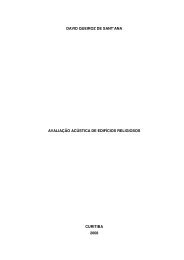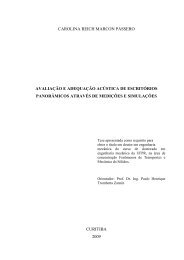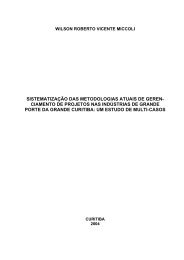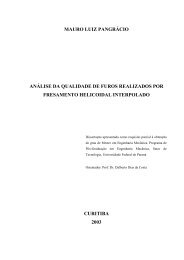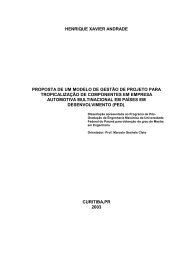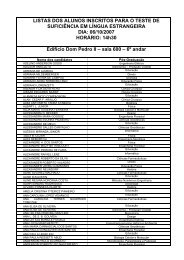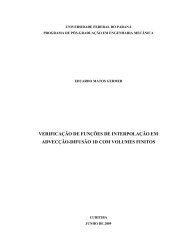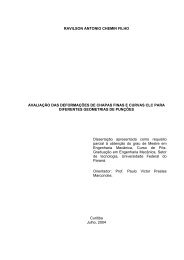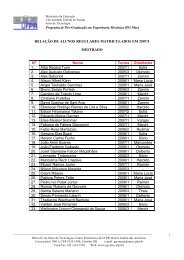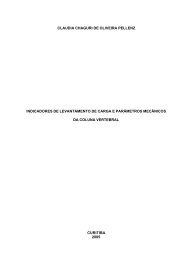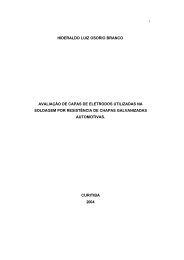fabiana de fátima giacomini - PG-Mec Programa de Pós-Graduação ...
fabiana de fátima giacomini - PG-Mec Programa de Pós-Graduação ...
fabiana de fátima giacomini - PG-Mec Programa de Pós-Graduação ...
Create successful ePaper yourself
Turn your PDF publications into a flip-book with our unique Google optimized e-Paper software.
ABSTRACT<br />
The focus of this work is the verification of the effect on the error discretization and its or<strong>de</strong>r<br />
caused by the boundary conditions application methodology, in problems solved with the<br />
finite volume method. In or<strong>de</strong>r to do this, the following aspects are consi<strong>de</strong>red: the Poisson,<br />
the adveccion-diffusion and the Burgers equations; one-dimensional domain; uniform grids;<br />
seven variables of interest with numerical interpolation schemes of first and second accuracy<br />
or<strong>de</strong>r; Dirichlet boundary conditions; tridiagonal solver; grids with up to millions of volumes;<br />
quadruple precision; and a number of iterations large enough to reach the machine round-off<br />
error. The boundary condition application methodologies consi<strong>de</strong>red are four: without and<br />
with ghost volumes; half-volume; and volume of zero thickness. The variables of interest are:<br />
the primary variable obtained in x = 1/ 2 ; the average of the primary variable; the norm<br />
average; and the first or<strong>de</strong>r <strong>de</strong>rivative. The main result is the fact that the half-volume<br />
boundary condition methodology had the smallest numeric error. Besi<strong>de</strong>s, the influence of the<br />
presence of the advective effect was verified in the adveccion-diffusion and the Burgers<br />
equations. Finally, it was verified that the concept of pollution error is implicit at the roundoff<br />
error, which changed the or<strong>de</strong>r of the numeric error of the first or<strong>de</strong>r <strong>de</strong>rivative, of the<br />
three studied problems: without and with ghost volumes and with volume of zero thickness.<br />
Keywords: Computational fluid dynamics. Finite volume method. Boundary conditions<br />
application methodologies. Discretization error. Error or<strong>de</strong>r.



